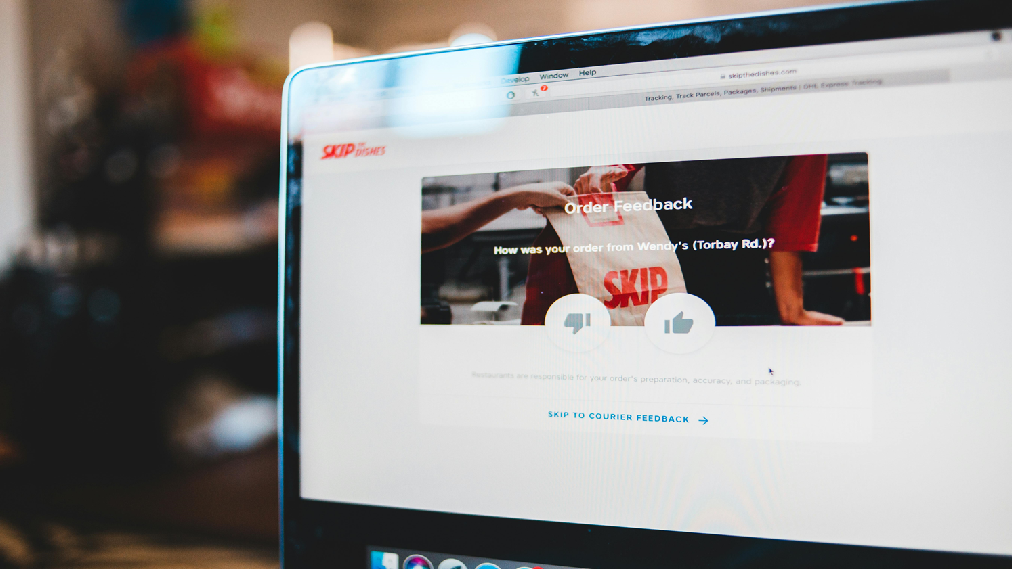How Customer Feedback Shapes Business Growth
The key to unlocking your business growth is about listening—really listening—to your customers. In an age where 25 out of 26 dissatisfied customers silently walk away, your business can't afford to turn a deaf ear
This is where collecting customer feedback has proven to be a game changer. Customer feedback can turn your business into a competitive powerhouse. However, only collecting feedback from your customers is not enough. You must dig deeper to understand how this feedback shapes your business growth. In this blog, we will arm you with strategies to master feedback collection and decode its impact on your growth trajectory.
How to Collect Customer Feedback?
Most companies today use a combination of various methods to collect customer feedback. This allows brands to facilitate customer convenience and collect as much information as possible to pursue data-driven business growth.
Here are some of the most commonly used methods of collecting customer feedback:
In-app or Web-Based Surveys
In-app or web based surveys are collected during key moments in user interactions, like when a task is completed or when users exit the app, to gather real-time customer feedback. This immediate data helps companies quickly identify and address user pain points, enhancing product features and overall user experience. A customer service virtual assistant can help in collecting and maintaining data, engaging users and responding to feedback.
Uber is a noteworthy example of collecting feedback. They employ these surveys to refine its app interface, driver-passenger algorithms, and service quality. This feedback also informs Uber's pricing and promotions. Their two-way rating system also creates a feedback loop between drivers and riders.

Based on collected ratings, Uber calculates average scores for both drivers and customers. Low-rated drivers are prompted to improve, while poorly-rated clients may face penalties. Since adopting this feedback model, Uber has made several updates for customers to provide contextual feedback for their negative experiences.
Holger Sindbaek, the founder of the gaming platform Online Solitaire, says, "When we first launched our online gaming platform, we thought we had all the features gamers would love. But we were missing the mark on user experience. So, we implemented real-time in-app surveys that popped up right after a player completed a level or made an in-game purchase. The immediate feedback was eye-opening. We discovered that 35% of our users wanted a specific feature we hadn't even considered. Within a week, we rolled out the update. Our user engagement soared by 25%, and the time spent on our platform increased significantly."
Customer Interviews
Interviews and focus groups offer deep insights into your customer’s preferences but are limited in scale due to cost and logistics. These direct conversations allow you to ask more specific questions and allow participants to react in depth.
Intuit used follow-me-home interviews to discover that most of their customers were gig workers. Leading to the creation of Quickbooks Self-Employed.

Intuit regularly conducts these customer interviews to retain a sustained understanding of what their customers want and deliver products best suited to their needs.
Social Listening
Social media isn't just for marketing; it's a goldmine for customer feedback.
About 44% of consumers feel more connected to brands that engage on social platforms, and 59% view a brand more favorably if it responds to online complaints. Social listening tools allow you to gauge customer sentiment and proactively address needs, enhancing customer experience.
Tesla does this with great success. The company adeptly uses social listening to make real-time adjustments based on customer feedback.

It's not just a CEO-driven approach; Tesla makes about 20 engineering updates to its Model S every week, largely fueled by customer input, solidifying its brand loyalty.
Net Promoter Score Surveys
Net Promoter Score (NPS) is a quick, effective way to measure customer loyalty by asking how likely they are to recommend a product. It helps businesses identify improvement areas and complements other metrics like CSAT and CES scores.
For instance, Slack relies on NPS and daily active users to monitor long-term user satisfaction. The company utilized the feedback collected from these surveys to refine its platform's usability, aiding in customer acquisition and retention.

Before launching, they spent seven months addressing beta user feedback, resulting in one of the market's most customer-centric messaging tools.
Free-Text Feedback Boxes
Free-text feedback boxes allow customers to post honest opinions without being limited by specific questions. While the responses can sometimes be vague, they often reveal valuable perspectives that predefined questions might miss. These feedback boxes may be in the form of in-app popups, feedback buttons, feedback sites like G2, product request forms, and other features.
Amazon, a company renowned for its customer-centric focus, employs this method alongside other metrics like customer ratings and CSAT scores. It also allows their customers to rate sellers and comment on delivery services.

Amazon has always been a brand focused on user-centricity. According to their corporate philosophy, such multifaceted feedback gathering is key to their two-decade-long term growth and success.
Community Forums
Community forums are fertile grounds for customer feedback, allowing open discussions where customers can share their thoughts and concerns. This provides valuable insights and enables businesses to engage in real-time dialogues with their customers to identify common issues.
HubSpot customer feedback community forum is a fine example of a "customer-first" strategy.

This forum serves as a networking and learning space where users can interact, offer feedback, and learn how to utilize the platform better. This data, in turn, informs HubSpot's product development and marketing efforts.
HubSpot implements customer feedback to drive product development and update marketing strategies. The HubSpot team firmly stands by its "customer-first" approach, providing customers with a feedback community forum to join, network, and interact with other HubSpot customers, provide feedback, and learn tips and tricks for using the app together.
How Does Customer Feedback Drive Business Growth?
No business can afford to remain stagnant in an era where marketing trends are changing rapidly and customers are becoming more picky. Customers, in-fact, demand an omnichannel experience and businesses have to live up to these expectations. One of the key ways to tackle this is by working on customer feedback and orienting every operation as per the customer's demands. Businesses need to amass all the customer data and then analyze customer feedback for insights. Below are the different ways customer feedback can drive business growth:
Improve Existing Products and Build New Ones
Customers know their needs, and companies that know that inevitably win the business game. Your product may seem perfect to you, but there may be a customer who identifies something missing. This is where — parsing and analyzing customer conversations with the sales and customer success team or maintaining a database of issues raised in support tickets — becomes useful.
Customer feedback lets you know which areas of your product or service need improvement and enables you to build newer and better versions of your offerings tailored to serve your target prospect's needs.
This is how the concept of the Voice of Customer was developed in product research and development. Guesswork will be eliminated by incorporating customer feedback during the initial stage. This further validates your hypotheses and assumptions.
Salesforce created IdeaExchange, a dumping ground for customers where they can suggest new product features. The users can also search for ideas submitted by others and cast votes for the features they think the business should implement. The Product Development Team evaluates each concept that receives 250 votes or 2,500 points.
By incorporating their customers’ suggestions to support product innovation, Salesforce ensures that they meet the specific needs of their community.

Ultimately, long-term user feedback is a powerful motivator for new product development, and innovation is a cornerstone of business growth, isn't it?
Drive Business Revenue and Profitability
Customer feedback directly impacts business revenue and profitability by driving innovations that improve customer satisfaction.
Positive feedback draws additional customers with word of mouth and online reviews result in greater sales and loyalty. Addressing negative feedback helps refine products, services, and the customer experience, lowering turnover and increasing retention.
This feedback-driven continual development cycle increases customer lifetime value and recurring revenue. Furthermore, customer-centric improvements distinguish a brand, encouraging competitive advantage and premium pricing. Finally, the synergy of feedback-driven improvements and enhanced customer involvement drives revenue growth and long-term profitability.
One perfect use case of this is Hyatt, the hospitality chain that surpassed the average industry CSAT score of 75 amidst the pandemic.

Hyatt employed two methods of collecting feedback—website surveys and social media.
Hyatt offers a dedicated landing page where customers can submit their thoughts on their most recent Hyatt visit. They also showcase Google custom reviews, thereby establishing trust, boosting sales, and elevating brand reputation.
Hyatt also sends out follow-up surveys to guests to learn about their experiences and make suggestions for the hotel company.

The company monitors consumer posts on their Instagram and Twitter profiles to see where their brand experience could be better. Customers are also encouraged to use the hashtags #WorldOfHyatt and #WorldOfunderstanding to share their stay experiences at various Hyatt locations worldwide.
The more customers are satisfied, the more they market your brand to others, and new customers automatically bring in more revenue and improve profitability.
Serve as Social Proof and Increase the Brand's Reputation
In the digital era, positive customer reviews can be the beacon that attracts new customers to your brand, like moths to a flame.
Good feedback builds credibility and trust, which persuades potential buyers that the brand is reputable and of excellent quality. Many positive reviews show that customers are generally satisfied, enhancing the brand's overall reputation. Even when bad feedback is addressed positively, it demonstrates openness and a dedication to customer happiness.
For instance, Intercom prominently showcases customer reviews as social proof on its homepage. It is a great tactic that helps the product instantly gain the trust of first-time visitors. This approach can be equally effective for businesses considering Intercom alternatives in establishing credibility and attracting new customers.
Intercom also features a testimonial from a highly credible user right next to the sign-up form, enabling prospects to visualize post-purchase success and subscribe to their services quickly.

Thus, a good brand image directly contributes to boosting business growth.
Uncover Hidden Pain Points and Tailor Offers Accordingly
No matter how user-friendly your product or service, your customers may face problems using them. They usually will not let you know before they dump you for your competitor, but you have to be prepared if they do. The first step is to parse through the feedback information you gathered.
Next, you must address these issues for your clients to enhance their brand experience. Analysis of customer feedback may even uncover your customer's unmet demands.
Sometimes, customers' pain points arise after they start using your product. Using your product highlighted another need for them where your current invention falls short. It could also be that your solution only addresses one aspect of their problem, and those customers acquired more experience with their issue after implementing your product.
Regardless, it's crucial to request customer feedback to stay up-to-date on what your customers need from your brand. Keeping devising solutions to their problems as they arise will position you as a true expert and all-round provider.
Improve Brand Experience and Retention
Customer feedback helps you understand the consumer's expectations, problems, and preferences. Businesses can customize their products and services and foster long-term relationships by considering these inputs, resulting in a more fulfilling and personalized experience between the customer and the brand. Nurturing these customers further boosts brand loyalty and keeps customers returning for repeat purchases until they are your brand's best advocates and evangelists.
Frequent feedback loops also show that a business that respects consumer feedback registers a boost in engagement and retention. Reduced churn rates result from effective modifications based on feedback because customers feel heard and their requirements are addressed. Ultimately, this iterative improvement process generates a positive feedback loop that strengthens customer retention and drives business growth.
Empower Employee Engagement and Morale
This may seem an indirect benefit, but customer feedback can also help raise employee morale.
Positive reviews from customers offer concrete proof of the benefits of their work and give workers a sense of purpose and success by recognizing and celebrating their contributions. To complement this, the act of giving employee recognition awards serves as a powerful means to further affirm and honor the dedication and excellence displayed by the team.
Employee motivation and pride are increased when they witness the real effects of their labor on customer satisfaction. Moreover, constructive criticism helps workers develop their abilities, which promotes personal development and workplace satisfaction.
Provide Accurate Data that Drives Informed Business Decisions
Lastly, insightful data from customer feedback is vital for company decision-making.
Research indicates that 52% of marketers adapt their marketing strategies and tactics based on customer interactions and feedback. This data-driven understanding directs marketing tactics, service improvements, and product creation.
With actionable customer feedback, businesses can base their decisions on real customer experiences rather than assumptions. Businesses may also make quick decisions, use resources wisely, and always strive for improvement by leveraging consumer feedback.
Wrapping Up!
Customer feedback isn't just a nice-to-have; it's the cornerstone of sustainable business growth. It informs everything from lead generation and customer acquisition to product development and service refinement.
Customer feedback helps:
a. Improving existing products and services.
b. Attracts more customers and enhances customer lifetime value.
c. Uncover hidden customer pain points and tailor offers accordingly.
d. Allows businesses to understand consumer expectations better.
e. Boost employee morale and engagement.
f. Provides actionable data that can drive informed business decisions.
So, what are you waiting for? Leverage customer feedback to supercharge your business growth today!






